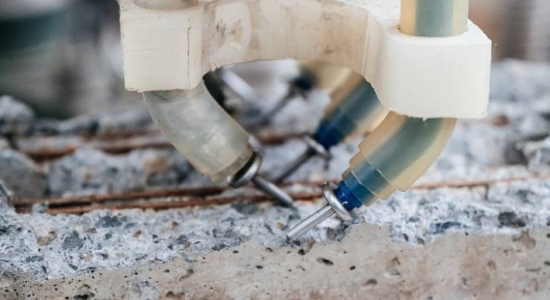Tomsk Polytechnic University (TPU) and TVEL have launched a project to use electric discharges to speed up the decontamination of radioactive concrete. The aim is to allow decontamination of several square metres per hour.
According to TVEL, part of Russia's Rosatom nuclear energy giant: "The principle of operation of the installation is based on the destructive effect of pulsed electric discharges with a power of at least 10KW, which pass through the thickness of the material under a layer of water. Impulses are transmitted using high-voltage electrodes. Up to five of them are arranged in a row on the surface to be treated, moistened with water. The electric discharge method allows you to remove layers of concrete from five millimetres, while there are no restrictions on the maximum removal depth."
Experimental testing is scheduled for 2024 and will be carried out on concrete with introduced radioactive substance simulators such as stable isotopes.
The plan is that removing the top layer means that the remaining "cleaned" concrete can be removed from radiation control and reused, assuming permissible levels of contamination have been reached.
Evgeny Bespala, TPU Deputy Vice-Rector for Science and Technology Transfer, said: "Robotic systems are increasingly used to decontaminate materials of building structures. This is a good technological step forward. The robot can also chip away chunks of concrete. However, an electric discharge does the same thing faster and more efficiently. In addition, the water in which concrete must be immersed naturally prevents the spread of dust, which inevitably appears during crushing of the material and may contain radioactive substances."
Eduard Nikitin, director of decommissioning programmes at TVEL JSC, said: "Tomsk Polytechnic University is one of the leading research centres in Russia not only in terms of personnel training, but also in R&D ... I am confident that the unique laboratory base of the university will become an effective platform for the development and pilot testing of technologies and technical solutions for the safe and responsible decommissioning of nuclear and radiation hazardous facilities.”
Photo: The aim is that an electric discharge will allow the contaminated surface layer of concrete to be chipped away to the desired depth faster than other methods (Image: TVEL)
- 20 views



